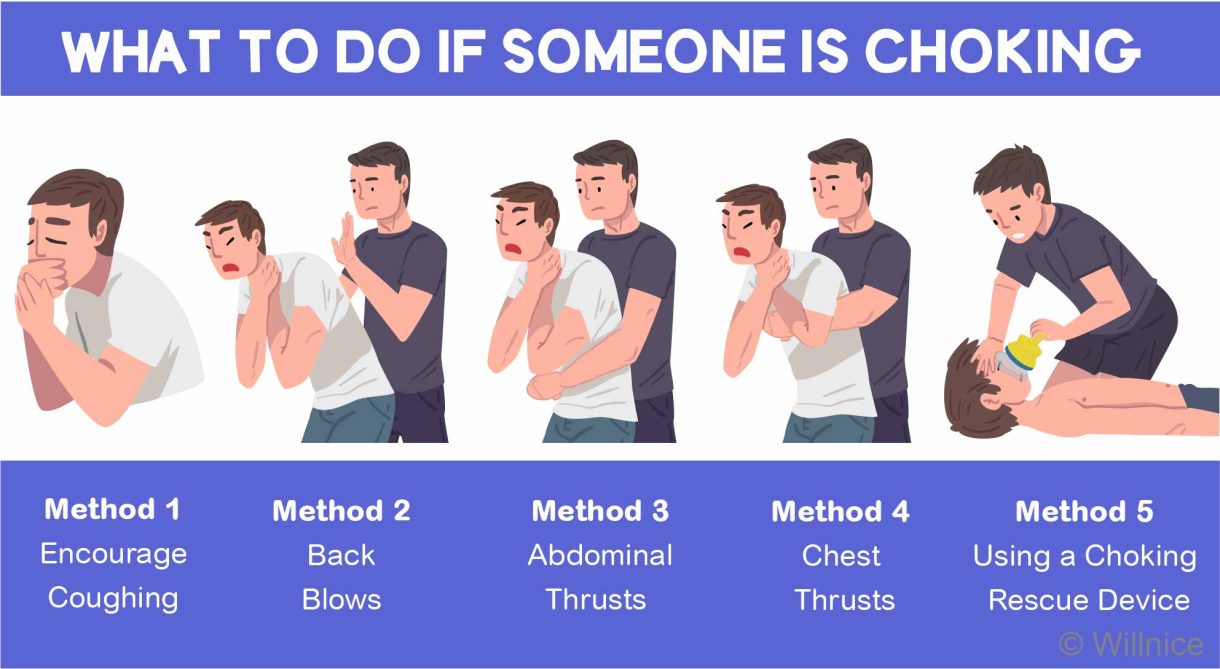
When choking occurs, it's crucial to act quickly and effectively. There are 5 methods to handle a choking emergency, depending on the situation and the age of the person involved.
Method 1 Encourage Coughing
Coughing is a natural reflex that helps clear airway obstructions. It is often the most immediate and effective method for dislodging an object that is partially blocking the airway.
Encouraging coughing should be the first response to choking if the choking person can still breathe or cough. This indicates that their airway is not completely blocked, allowing air to pass through. Encouraging them to continue coughing can leverage this airflow to help expel the object.
How to do:
- Stay Calm: Remain calm yourself and help the choking person stay calm.
- Encourage Forceful Coughing: Instruct the person to cough forcefully multiple times in quick succession. This increases air pressure in the lungs and can help push the object out.
- Assess Effectiveness: Continuously assess whether the coughing is effective in dislodging the object. Listen for changes in the sound of the cough and observe whether the person begins to breathe more normally.
- Prepare to Escalate: If coughing does not resolve the blockage quickly, be prepared to use more invasive methods such as back blows or Heimlich maneuver (abdominal thrusts).
Safety Precautions:
- Do not slap the person’s back while they are coughing, as this could cause the object to move deeper into the airway.
- Stay with the person until they have stopped choking or until emergency help has arrived if the situation does not improve.
- If the person is unable to make any sound or loses the ability to cough, this indicates a severe blockage and immediate action using back blows or abdominal thrusts is required.
Method 2 Back Blows
Back blows are a crucial first aid response for choking emergencies. They are used to create a strong vibration and pressure in the airway, which can help dislodge the object from the throat.
How to do:
For Adults and Children:
- Positioning: Have the choking person lean forward slightly, allowing gravity to help dislodge the object when you administer back blows.
- Technique: Deliver 5 sharp, forceful blows between the individual’s shoulder blades using the heel of your hand.
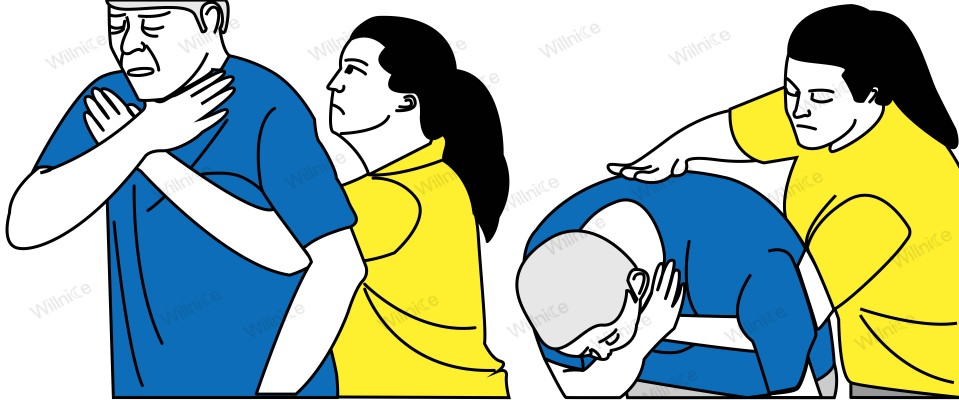
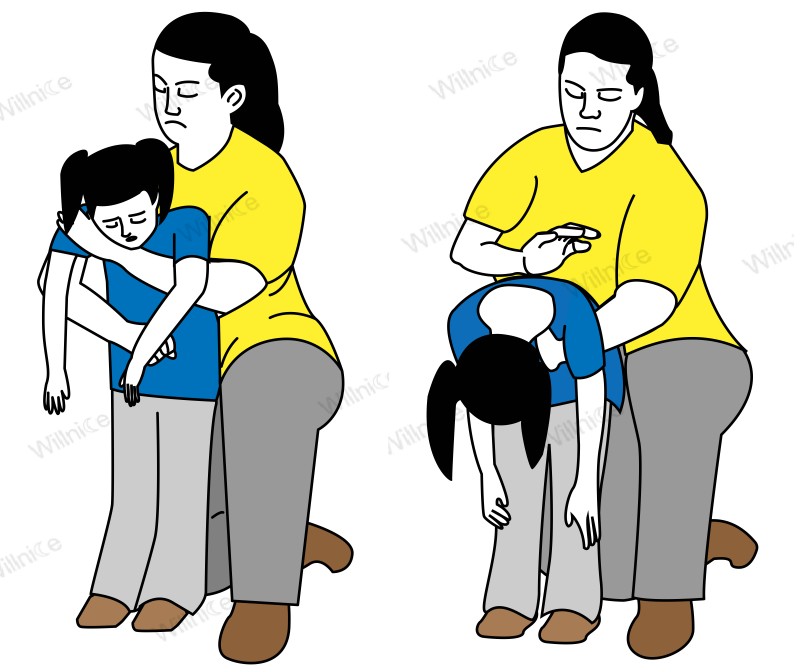
For Infants:
- Positioning: Hold the choking infant face down along your forearm, which is supported by your thigh to ensure stability. Ensure the infant's head is lower than the rest of the body.
- Technique: Use the heel of your hand to administer 5 firm back blows between the infant’s shoulder blades.
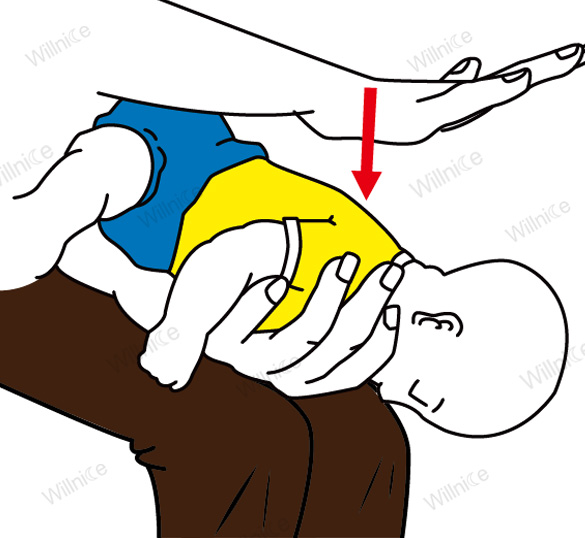
Safety Precautions:
- Observe Reactions: After each blow, check if the object has been dislodged and whether the person can breathe or cough freely.
- Avoid Excessive Force: Particularly with infants and small children, care must be taken to apply enough force to be effective without causing harm.
- Alternate with Other Methods: If back blows alone do not clear the airway, alternate with abdominal thrusts (or chest thrusts in infants) as part of a comprehensive response to choking.
Additional Tips:
- Always support the person’s head and avoid tilting it too far forward to prevent neck injuries.
- For pregnant or obese individuals, focus on delivering back blows more than abdominal thrusts to avoid potential complications.
Method 3 Abdominal Thrusts (Heimlich Maneuver)
What is the Heimlich Maneuver?
The Heimlich Maneuver, also known as abdominal thrusts, is a technique designed to expel foreign objects from the throat of a person who is choking.
The technique was popularized by Dr. Henry Heimlich in 1974, who advocated for its use as an effective method of saving choking victims. It quickly became synonymous with his name.
It involves standing behind the person and using a series of upward thrusts to the abdomen, just above the navel and below the ribcage. This action creates a rapid airflow that can dislodge the object, allowing the person to breathe again.
Why Heimlich Maneuver Works?
The quick, upward thrusts help increase the pressure in the thorax rapidly, which forces the diaphragm upward. This sudden force helps push air from the lungs with enough pressure to propel the lodged object out of the airway.
How to Perform Heimlich Maneuver?
Steps to Perform the Heimlich Maneuver on Another Person
Step 1 Assess the Situation
- Quickly determine that the person is indeed choking and cannot speak, breathe, or cough effectively.
- Ask, “Are you choking?” If they nod yes, tell them you are going to help.
Step 2 Positioning
- Stand behind the choking person. Have the person stand if they are sitting.
Step 3 Make a Fist
- Wrap your arms around their waist, ensuring they are slightly bent forward.
- Make a fist and place it just above the person's navel, well below the ribcage.
Step 4 Perform Abdominal Thrusts
- Grasp your fist with the other hand and press it into their abdomen with a quick, upward thrust — as if trying to lift the person up.
- Perform a series of 5 quick thrusts, checking to see if the blockage is dislodged between each thrust.
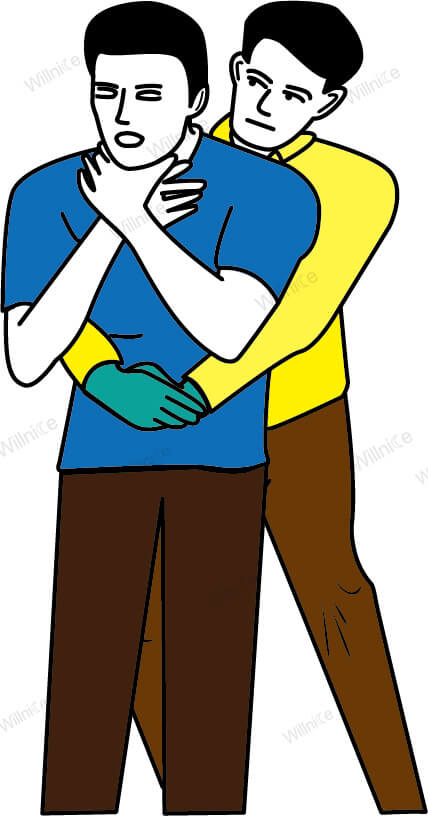
Steps to Perform the Heimlich Maneuver on Yourself
If you’re alone, you can perform the self-Heimlich maneuver by using a firm object like a chair or countertop to press the abdomen against.
Step 1 Make a Fist
- Make a fist and place it slightly above your navel.
- Grasp the fist with your other hand tightly.
Step 2 Press Hard
- Lean forward over the back of a chair so that your fist is pressed against it.
- Thrust your fist inward and upward into your abdomen forcefully.
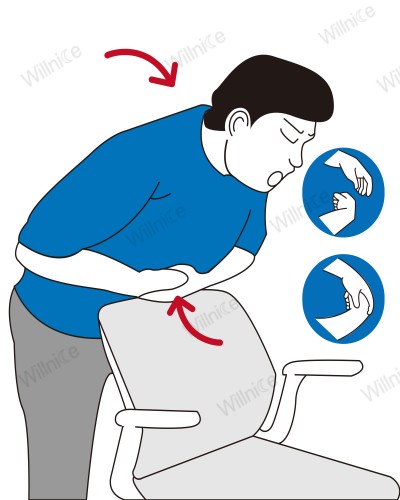
Step 3 Use a Firm Object
- If needed, you can also lean over a firm object like a chair, railing, or countertop.
- Press your upper abdomen against the edge with quick thrusts.
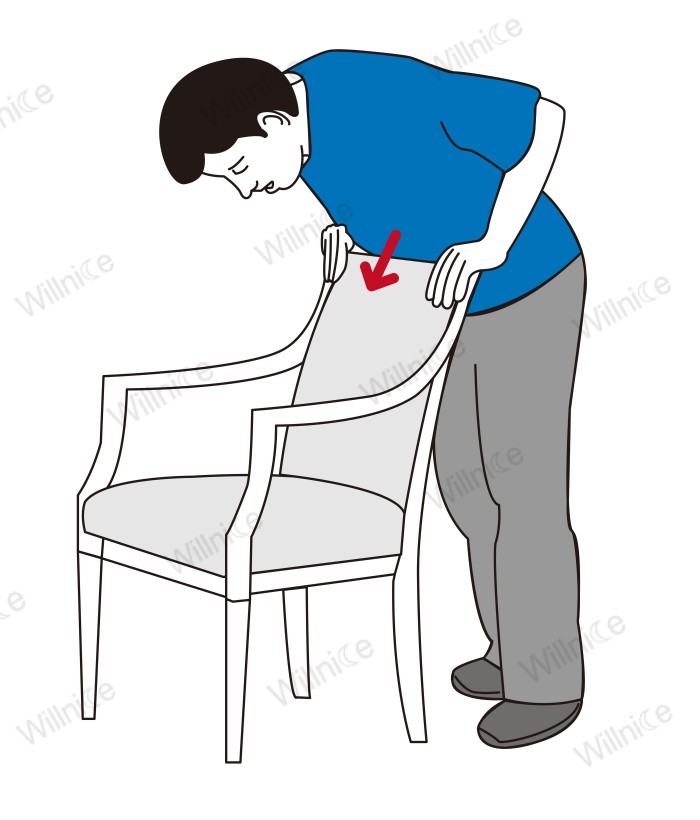
Safety Precautions:
- Avoid Too Much Force: Applying excessive force can cause injuries, such as bruising, broken ribs, or damage to internal organs.
- Aftercare: If the object is expelled and the choking victim resumes breathing, advise them to seek medical evaluation to check for any injuries caused by the obstruction or the thrusts.
- If the choking person becomes unresponsive, perform CPR right away.
Considerations for Pregnant or Obese Individuals:
- Perform the thrusts at the chest level to avoid putting pressure on the abdomen.
Also Read:
- Pregnant Choking First Aid: Complete Step-by-Step Guide
- First Aid If a Choking Victim is Too Large [Step-by-Step]
The Heimlich Maneuver, while effective in many choking situations, has specific limitations and scenarios where it might not be recommended or as effective.
Heimlich Maneuver Not Suitable for Certain Individuals
From the Choking Victim's Perspective
Infants Under One Year Old: For choking infants, use back blows and chest thrusts instead, as their bodies are too fragile for the force of abdominal thrusts.
Pregnant Women: The standard Heimlich Maneuver can pose a risk to the fetus. Chest thrusts are recommended instead to avoid putting pressure on the abdomen.
Obese Individuals: In very obese individuals, it may be challenging to properly perform the Heimlich Maneuver due to the difficulty in positioning the arms correctly around the person's abdomen and applying sufficient pressure.
Elderly and Frail Individuals: The force used in the Heimlich Maneuver can potentially cause injuries such as broken ribs or internal damage, especially in older adults or those with osteoporosis.
People with Abdominal Injuries: Such as surgery wounds, broken ribs, or other trauma, can exacerbate these injuries, causing severe pain.
Disabled People: Individuals with disabilities may face various limitations that make the application of the Heimlich Maneuver either challenging or unsafe. Here’s a detailed look at different types of disabilities:
- Mobility Impairments
- Disabled People in Wheelchairs
- Paralysis
- Neurological Disabilities
- Muscular Dystrophy and Multiple Sclerosis (MS)
- Cerebral Palsy
- Intellectual Disabilities
- Severe Autism or Down Syndrome
- Skeletal and Musculoskeletal Disorders
- Osteoporosis
- Arthritis
- Respiratory Conditions
- Chronic Obstructive Pulmonary Disease (COPD)
For these cases, it's crucial for caregivers and individuals themselves to have specific choking emergency plans tailored to their abilities and health conditions. This might include using specialized choking devices designed to clear airway obstructions without the need for traditional Heimlich maneuvers, such as Willnice choking suction devices.

From the Rescuer's Perspective
Certain characteristics or conditions can limit a rescuer's ability to effectively perform the Heimlich maneuver on a choking victim. Here are some scenarios where a rescuer might find it challenging or impossible to administer the Heimlich maneuver properly:
Physical Limitations
- Lack of Physical Strength
- Height and Size Discrepancy
- Physical Disabilities
Age-Related Factors
- Elderly Rescuers
- Children
Lack of Training
- Untrained Individuals
Medical Conditions
- Chronic Pain or Injuries
- Respiratory Conditions
Heimlich Maneuver Not Suitable in Certain Situations
- When the Person is Coughing Forcefully: If the choking person is still able to cough forcefully, they should continue to do so as this can help dislodge the item more safely than intervening with thrusts.
- Unconscious Victims: When a choking victim is unconscious, the Heimlich Maneuver on its own may not be effective or feasible. In these cases, it is often combined with CPR techniques, especially checking the airway for visible obstructions that can be removed manually if accessible.
Risks of Improper Heimlich Maneuver Use
- Internal Injuries: These include damage to internal organs, rupture of the stomach or esophagus, and even internal bleeding.
- Rib Fractures: Especially in individuals with weaker bones, such as the elderly or those with certain medical conditions.
- Vomiting and Aspiration: The force can cause the person to vomit, leading to aspiration of vomit into the lungs.
Method 4 Chest Thrusts
What are Chest Thrusts?
Chest thrusts are a first aid technique used to clear obstructions from a person's airway during choking incidents.
They serve as an alternative to abdominal thrusts (commonly known as the Heimlich Maneuver), particularly useful for individuals in situations where abdominal thrusts are not recommended, such as in cases of obesity, pregnancy, or extensive abdominal surgery.
Why do Chest Thrusts work?
Chest thrusts involve delivering quick, forceful compressions to the middle of the chest. This action increases pressure in the chest cavity and forces air rapidly out of the lungs. The force of this air can help dislodge the item that is blocking the airway.
Steps to Perform Chest Thrusts
Positioning
- If the choking individual can stand, stand behind them. If they are sitting or unable to stand, support them in a secure upright position.
- Stand or kneel behind the person, depending on their height and your own.
Technique:
- Place your fist on the breastbone (in the center of the chest, between the nipples) of the choking victim.
- Cover your fist with your other hand.
- Press inward and upward sharply and quickly, as if trying to lift the person with each thrust.
- Perform these thrusts in sets of five, checking between sets to see if the blockage has been cleared or if the person has started to breathe or cough.
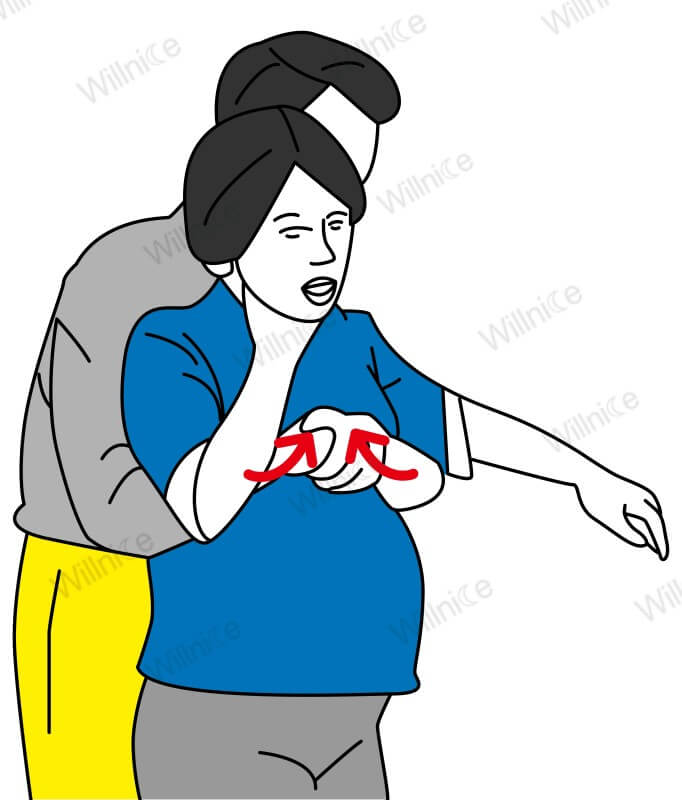
Safety Precautions
- Ensure that your hands are positioned correctly to avoid causing damage to the ribs, sternum, or internal organs.
- After each set of chest thrusts, quickly evaluate the person’s condition. If they become unresponsive at any time, begin CPR if trained and call for emergency medical assistance immediately.
Special Considerations
- For Pregnant or Obese Individuals: Chest thrusts are preferred because they avoid putting direct pressure on the abdominal area, which can be risky in these individuals.
- For Wheelchair Users or Those Who Cannot Stand: Chest thrusts can often be performed with the person seated, making it a viable option when the person cannot be positioned for abdominal thrusts.
Method 5 Using a Choking Rescue Device
In some cases, especially where traditional methods might not be feasible or if the individual is alone, using a specially designed anti-choking device like the Willnice Anti-Choking Device can be effective. The choking rescue devices create strong suction to help pull the obstructions upward and out of the throat.
Conclusion
This article outlines five effective first aid techniques for responding to a choking emergency. Covering methods suitable for all ages, it provides step-by-step instructions and essential safety tips to ensure quick and safe intervention.
It’s crucial for caregivers, family members, and the individuals themselves to have a clear understanding of what methods are safest given their specific health conditions and circumstances.


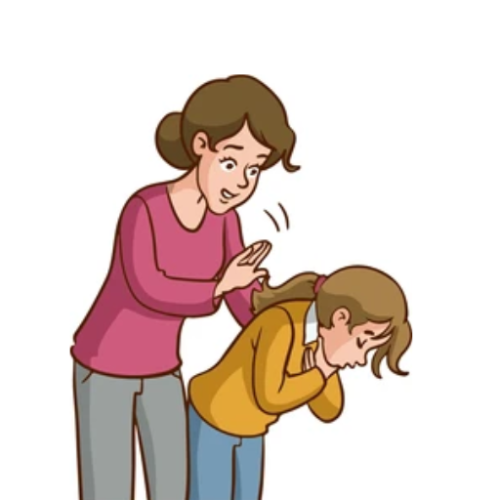
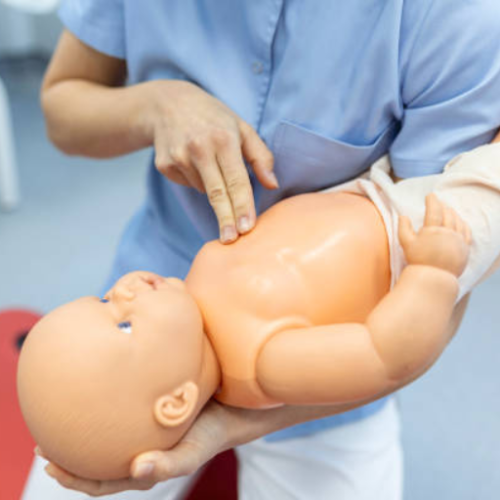

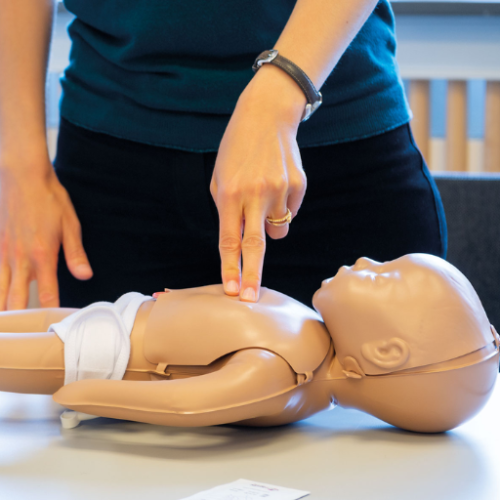


 Login with Google
Login with Google Login with Facebook
Login with Facebook